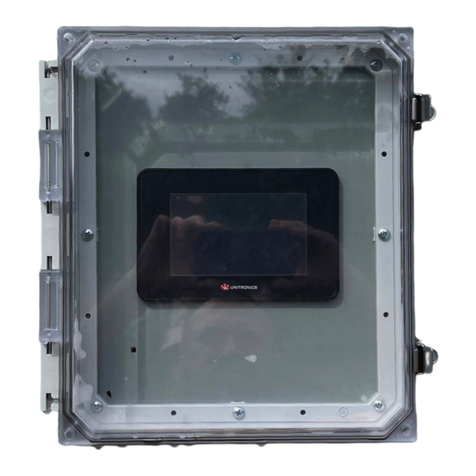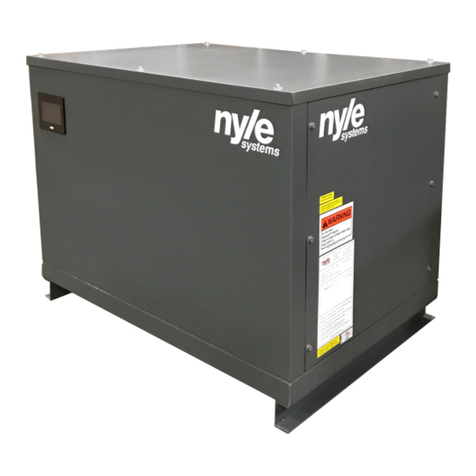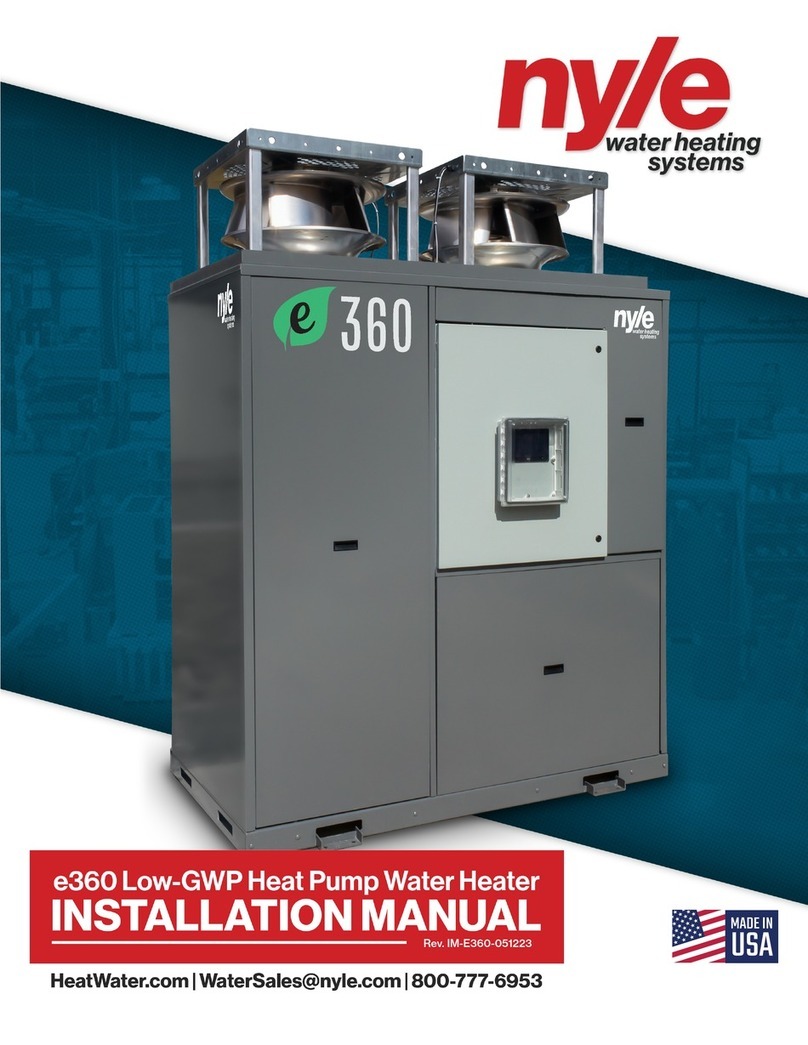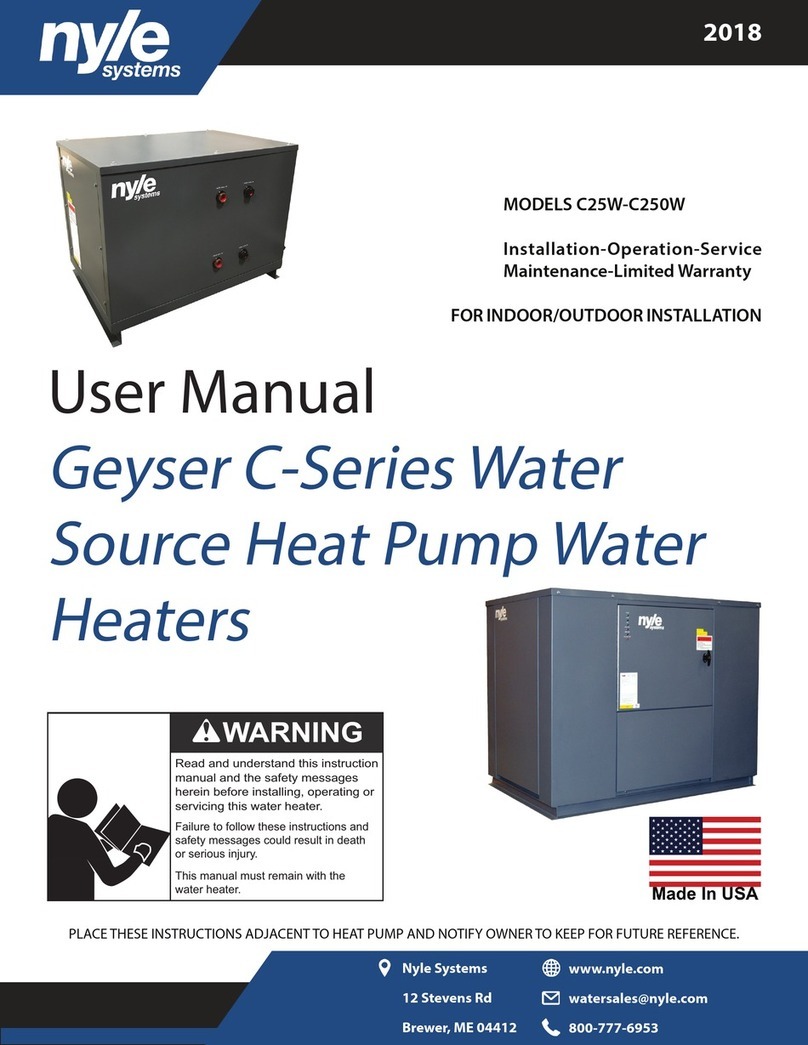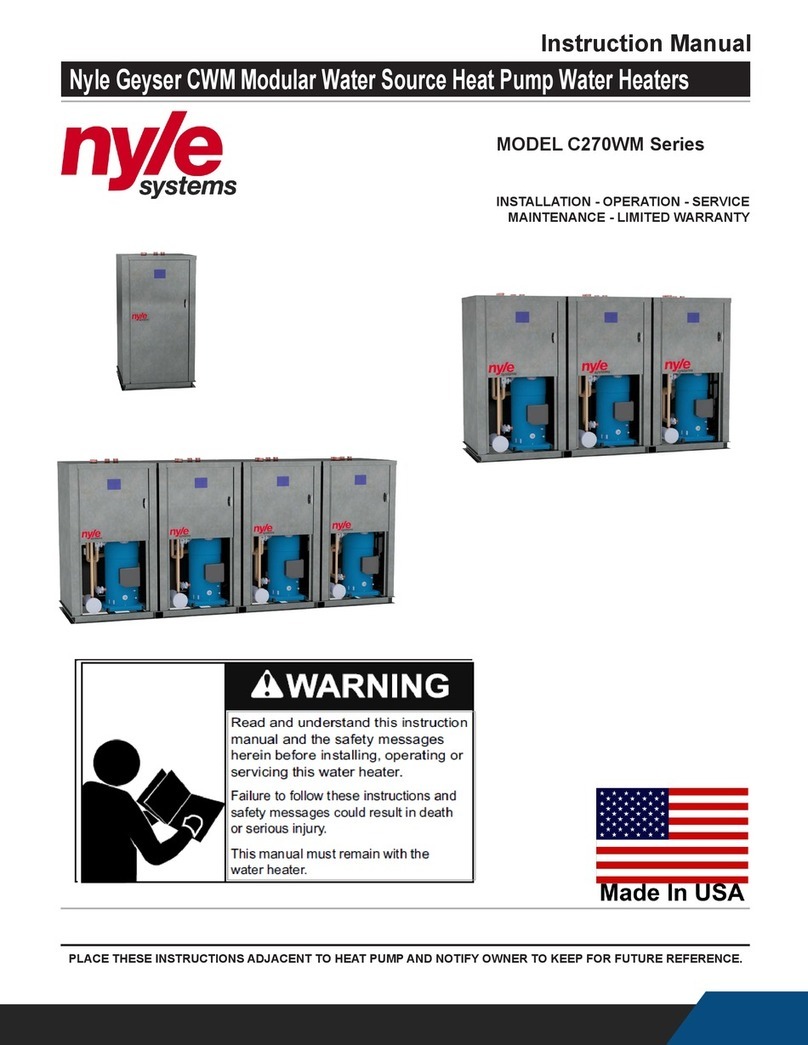
Introduction
Thank you for your purchase of a C185A air source
heat pump water heater! With this purchase, you now
own one of the most ecient and reliable large-vol-
ume water heaters available in the world today. This
unit will produce potable hot water from a highly ef-
cient and capable heat pump, helping end users
reach their carbon reduction, electrication, eciency,
and operating cost reduction goals.
The C-Series heat pumps use R-134a refrigerant, are
available in single-pass or multi-pass congurations,
and are capable of providing single-pass water heat-
ing to appropriate external storage vessels with up to
160°F water, and can perform at outdoor tempera-
tures as low as 40°F (35°F with optional CWP/Active
Defrost accessory). Models are available for 230V
and 460V 3-phase power, include internal power qual-
ity monitoring, and all units are ready to be integrated
into BMS systems with the purchase of an additional
BMS Gateway accessory. C-Series air source units
can also be congured with axial fans for ductless ap-
plications, or blower fans for ducted applications.
Nyle’s C-Series units are not intended for primary
space conditioning. When installed in suitable condi-
tioned spaces, they can provide supplemental cooling
and/or dehumidication benets.
C185A Air Source Heat Pump Water Heater
(Axial Model Shown)
Safety Information
The proper installation, use and servicing of this com-
mercial heat pump water heater is extremely import-
ant to your safety and the safety of others.
Many safety-related messages and instructions have
been provided in this manual and on your own heat
pump water heater to warn you and others of a poten-
tial injury hazard. Read and obey all safety messag-
es and instructions throughout this manual. It is very
important that the meaning of each safety message
is understood by you and others who install, use, or
service this heat pump water heater
This is the safety alert symbol. It is used
to alert you to potential personal injury
hazards. Obey all safety messages that
follow this symbol to avoid possible in-
jury or death.
DANGER
DANGER indicates an imminently hazardous situation
which, if not avoided, will result in injury or death.
WARNING
WARNING indicates a potentially hazardous situation
which, if not avoided, could result in injury or death.
CAUTION
CAUTION indicates a potentially hazardous situation
which, if not avoided, could result in minor or moderate
injury.
CAUTION
CAUTION used without the safety alert symbol indi-
cates a potentially hazardous situation which, if not
avoided, could result in property damage.
All safety messages will generally tell you about the type
of hazard, what can happen if you do not follow the safety
message, and how to avoid the risk of injury.
The California Safe Drinking Water and Toxic En-
forcement Act requires the Governor of California
to publish a list of substances known to the State of
California to cause cancer, birth defects, or other re-
productive harm, and requires businesses to warn of
potential exposure to such substances.
This product contains a chemical known to the State
of California to cause cancer, birth defects, or other re-
productive harm. This appliance can cause low level
exposure to some substances listed in the Act.


















